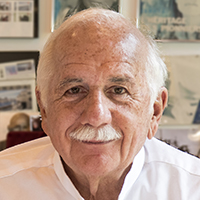Session 8: The Garden City in Three Dimensions

Moshe Safdie
Founder
Safdie Architects, Boston
The avant-garde in architecture today often treats towers as heroic sculptural objects within the skyline of the city. There is little exploration of the livability and quality of life within the tower, let alone a critical assessment of how they might respond to the density, scale, mobility and transportation issues of our era. Subsequently, there has been less attention to the impact on the quality of life of high-rise buildings, be they residential, workspace, or public institutions.
Through several mega-projects in Asia, new building arrangements have been studied in distinct combinations, all with open systems linking to an urban system. Our goal has been to connect workspace, communal space, and urban recreational space in such a way as to generally improve the quality of their experience; while increasing porosity of building mass, to provide better exposure, and contact with light and air. We have been exploring the potential of bridging and linking towers to form a more fluid and connected 3D network – essentially thinking of urban design in three dimensions.
The clustering of tall buildings, the order of their arrangement, the provision and penetration of daylight and sunlight, require some fundamental rules and guidelines. This cannot be accomplished through the public or private sectors alone. Urban design concepts, which strive to create a new order, and imaginative designs, which respond to this potential, are key to the future of the city—and the life within it.
